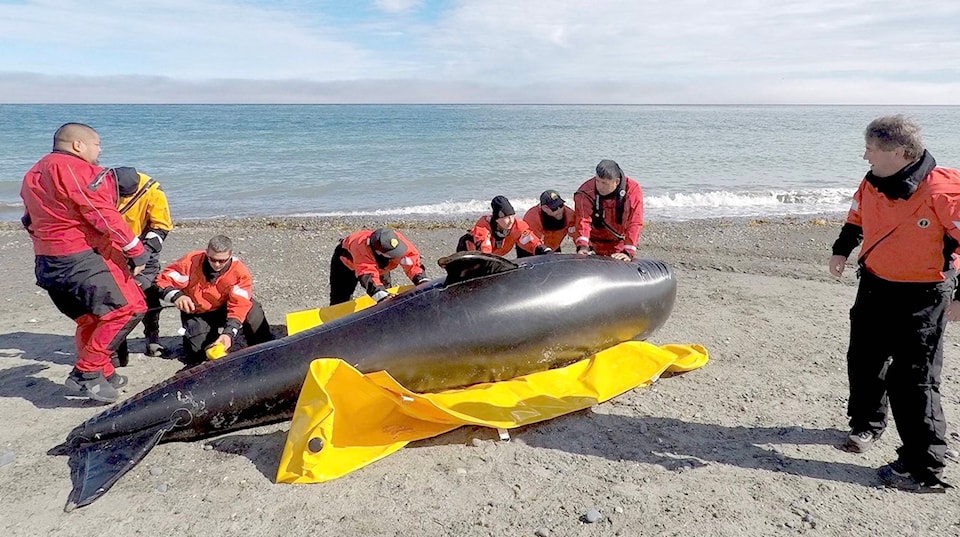A strange whale recently showed up by Cemetery Beach in Masset — a rare species that could really thrive in a backyard pool.
Made of black plastic and filled with water, the 12-foot model whale was used to show DFO fishery officers and Haida fishery guardians how to re-float a whale using a pair of bright yellow pontoons and a sling.
The exercise was part of a series of training sessions that should help the next time a marine mammal gets beached or entangled around Haida Gwaii.
“We want to be as prepared as we can,” said Genevieve Cauffopé, a program officer with the conservation and protection branch of Fisheries and Oceans Canada.
Especially in the waves, Cauffopé said the model whale is a good stand-in for the real thing — a beached orca or other mid-sized cetacean, such as a young humpback.
Fitted with handles for up to 14 rescuers plus hooks for towing with a boat, the yellow pontoons used in the exercise are now stored at the DFO office in Masset.
Fishery officers and guardians also practiced first step for disentangling a much larger whale — attaching a satellite tag so an expert can find the animal before the entangling gear puts its life at risk.
While people may want to try and immediately cut an entangled whale loose, it presents a deadly risk to people and to whales too.
In the past, inexperienced people have managed to cut away just enough gear that the whale swims away half-entangled, making it harder to reach before it dies of complications.
Anyone who sees a marine mammal in distress should report it by phoning 1-800-465-4336.
Besides beached and entangled animals, the training sessions covered how to do a marine mammal necropsy. The next time a marine mammal carcass washes up on Haida Gwaii, the fishery guardians and officers will have a kit and the know-how to collect tissue samples that may show researchers just how the animal died.
Cauffopé said the training program, funded by the federal Oceans Protection Plan, may run a second time in Queen Charlotte later this year.
“That was a nice group,” she said of the three Haida guardians and seven DFO officers who took part in Masset.
“It was great that they did the training together because they’ll be working as a team if there is another occurrence in Haida Gwaii.”
andrew.hudson@haidagwaiiobserver.com
Like us on Facebook and follow us on Twitter
